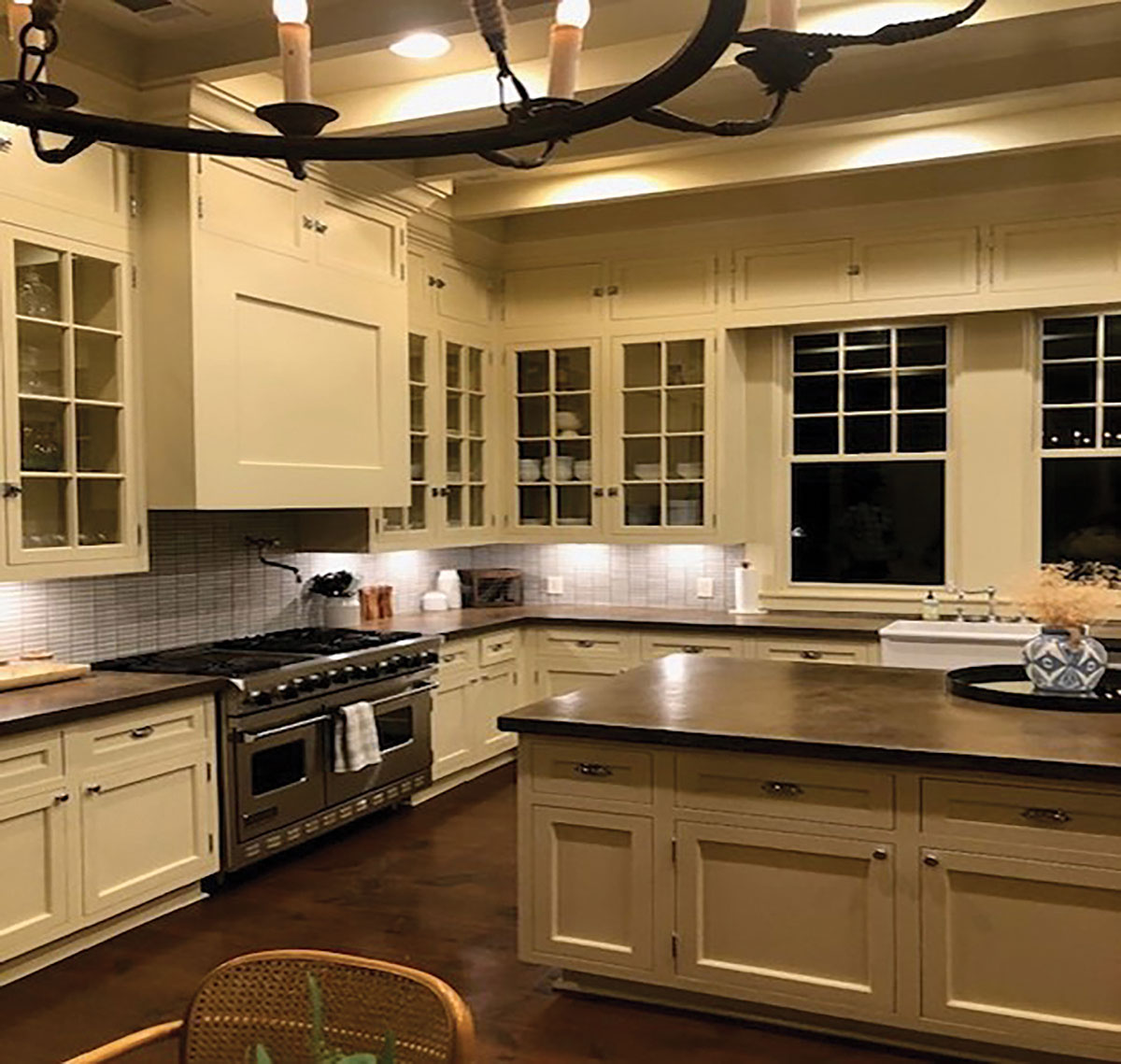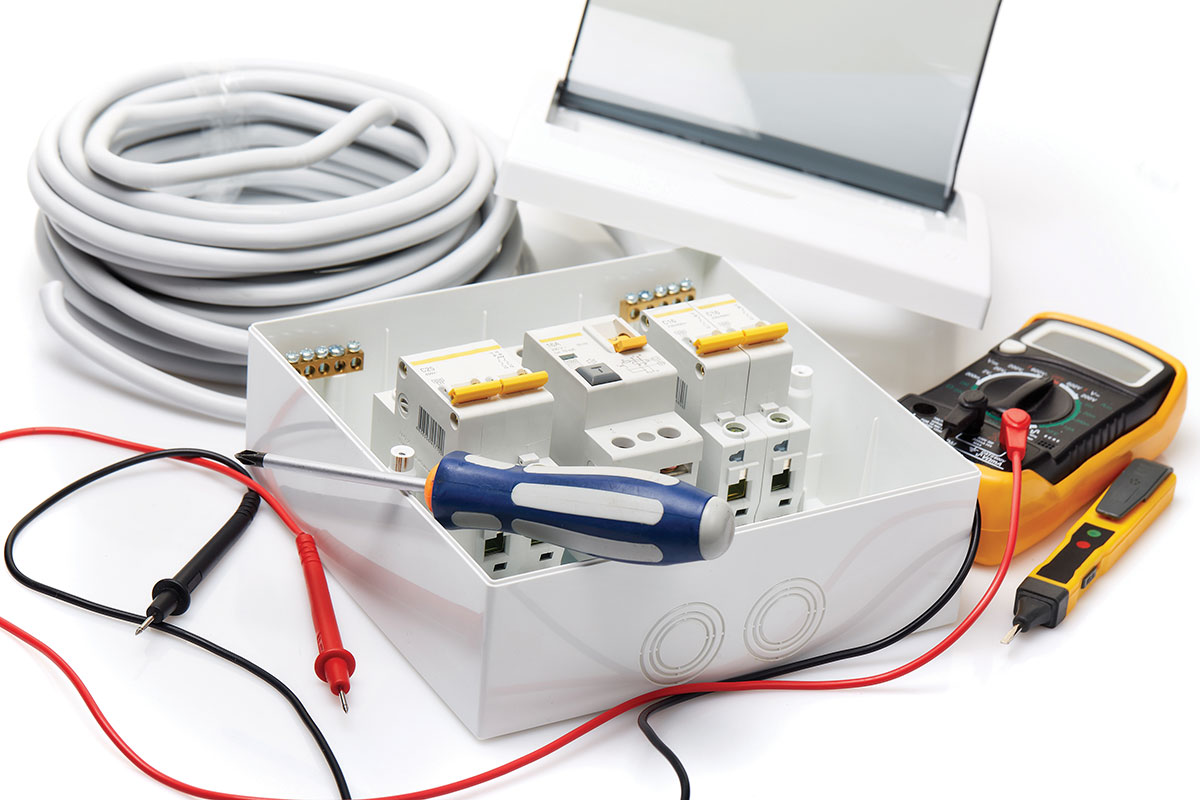Insulation and grounding are two recognized means for preventing injury during electrical equipment operation. Conductor insulation may be provided by placing nonconductive material, such as insulation, around the conductor. Grounding may be achieved through the use of a direct connection to an available, effectively grounded electrode, such as a metal water pipe, structural steel, a concrete-encased electrode, or a properly installed ground ring.
Another method of preventing possible injury is to place a metal housing or an enclosure around a motor or other electrical equipment, such as switches or circuit breakers. Such enclosures protect the equipment from dirt and moisture and prevent accidental contact with exposed wiring. There is, however, a hazard associated with these metallic enclosures; a malfunction within the equipment, such as deteriorated insulation, may create an electrical shock hazard. Consequently, these non-current carrying metal enclosures are required to be effectively grounded in order to eliminate the shock hazard. If an ungrounded “hot” conductor contacts a grounded metal part or enclosure, a ground fault results, which should be able to travel back to the source of power for the circuit, over the effective equipment grounding conductor path, which meets the requirements of the 1999 National Electric Code, Section 250-2(d) and Section 250-122.
Insulation may be damaged by hard usage on jobsites or by aging. If this damage results in the conductor(s) becoming exposed, the hazards of shock, arc, and fire may exist. Double insulation may be used as additional protection on the live parts or on a tool, but double insulation does not provide protection against defective cords and plugs or against heavy moisture conditions.
The use of a ground-fault circuit interrupter (GFCI) is one method, which may be used to overcome grounding and insulation deficiencies.
The NEC requirements for temporary wiring are found in Article 305 of the 1999 National Electric Code. The scope of Article 305 in Section 305-1 states that “”the provisions of this article apply to temporary electrical power and lighting wiring methods that may be of a class less than would be required for a permanent installation.””
Even though temporary wiring may be used, it is important to remember the possible hazards of using temporary wiring. In many cases, the temporary wiring is of a class less than the permanent wiring methods normally used. Sections 305-4(b) & (c) permit the use of hard usage cord or cable instead of the permanent wiring methods normally used, i.e., EMT or rigid conduit. With the wide use of portable tools and flexible cords, hazards are created when these flexible cords, cord connectors, receptacles, and cord- and plug-connected equipment are improperly used or maintained. An important point to remember is that no matter which wiring method is used, the manufacturer’s listing instructions for the use of that product must be followed.
If type NM nonmetallic-sheathed cable were used outdoors in a wet location, this would be in violation of the manufacturer’s listing instructions, which prohibit use of this wiring method in wet locations.
Note that Section 305-2(a) states, “Except as specifically modified in this article, all other requirements of this Code for permanent wiring shall apply to temporary wiring installations.” To ensure that installations are installed in a safe and Code-approved manner, Section 305-2(b) states, “Temporary wiring methods shall be acceptable only if approved based on the conditions of use and any special requirements of the temporary installation.”
Section 305-6. Ground-Fault Protection for Personnel. Ground-fault protection for personnel for all temporary wiring installations shall be provided to comply with (a) and (b). This section shall apply only to temporary wiring installations used to supply temporary power to equipment used by personnel during construction, remodeling, maintenance, repair or demolition of buildings, structures, equipment, or similar activities.1
The 1999 NEC differs somewhat from the 1996 NEC, by requiring compliance with both (a) and (b). The 1996 NEC offered a choice of using either (a) or (b).
Section 305-6(a). Receptacle Outlets. All 125-volt, single-phase, 15-, 20-, and 30-ampere receptacle outlets that are not a part of the permanent wiring of the building or structure and that are in use by personnel shall have ground-fault circuit interrupter protection for personnel. If a receptacle(s) is installed or exists as part of the permanent wiring of the building or structure and is used for temporary electric power, ground-fault circuit-interrupter protection for personnel shall be provided. For the purposes of this section, cord sets or devices incorporating listed ground-fault circuit-interrupter protection for personnel identified for portable use shall be permitted.2
There are two exceptions to this section.
Exception No. 1: Receptacles on a 2-wire, single-phase portable or vehicle-mounted generator rated not more than 5 kW, where the circuit conductors of the generator are insulated from the generator frame and all other grounded surfaces, shall be permitted without ground-fault protection for personnel.
Exception No. 2: In industrial establishments only, where conditions of maintenance and supervision ensure that only qualified personnel are involved, an assured equipment grounding conductor program, as specified in Section 305-6(b)(2) shall be permitted to be utilized for all receptacle outlets.3
In the 1996 edition of the NEC, this exception was questioned because of an error in the written language of the paragraph that followed this exception. The error was in the wording of the first complete sentence of Section 305-6(b). The wording did not include the use of 15- or 20-ampere receptacle outlets. During the proposal period of the 1999 NEC, CMP-3 accepted a proposal which corrected the error. During the discussion, a motion was made to delete Exception 2. The motion failed.
This same issue, regarding Exception No. 2 of Section 305-6(a) came about again in the Proposals for the 2002 edition of the NEC. This time, instead of accepting a proposal to change Exception No. 2, by adding “construction sites,” Exception No. 2 was deleted. If this panel action stands, there will be only one exception to the use of GFCI on construction sites or in industrial establishments—Exception No. 1.
In conclusion, it is the employer’s responsibility to comply with Article 305 of the National Electric Code in its entirety. Ground-fault circuit interrupters can be used successfully to reduce electrical hazards on construction sites utilizing temporary wiring methods.
1 NFPA 70, National Electrical Code, Article 305, (Quincy, MA: National Fire Protection Association; 1998) p. 70–116.
2 ibid.
3 ibid.










Find Us on Socials